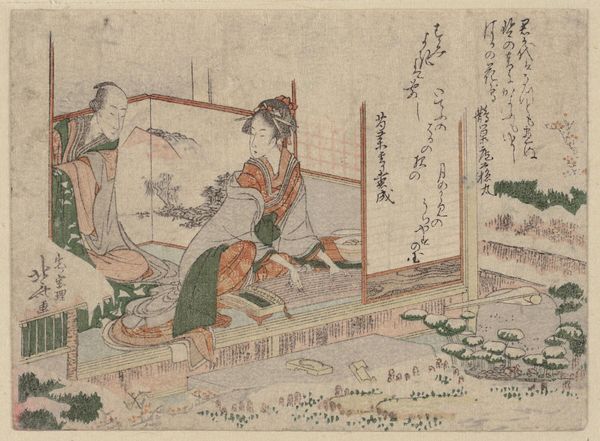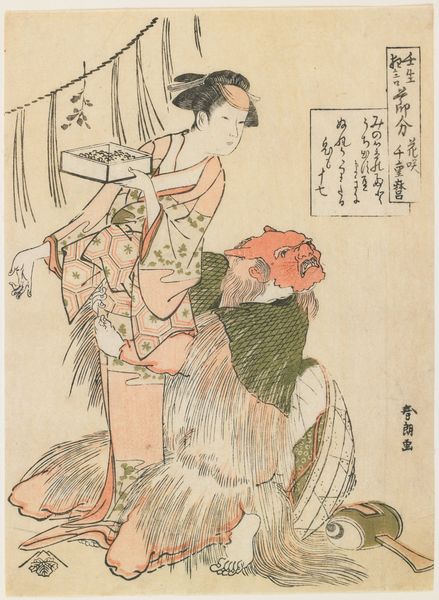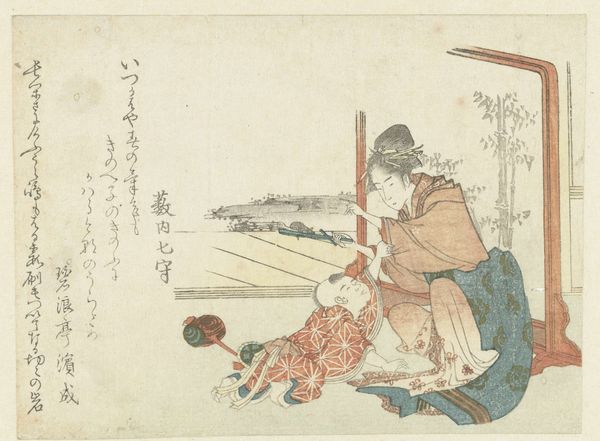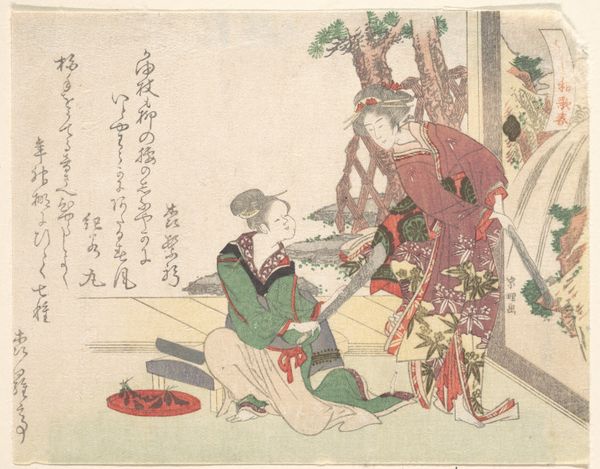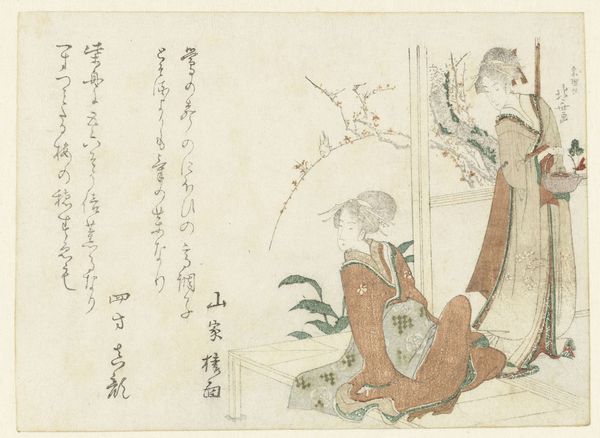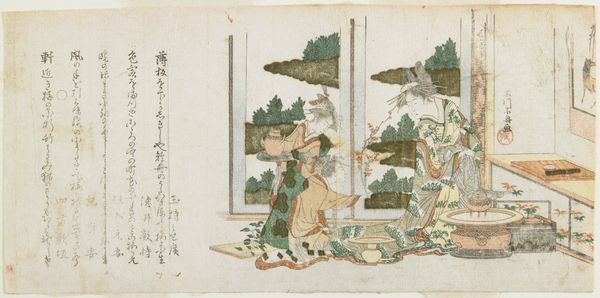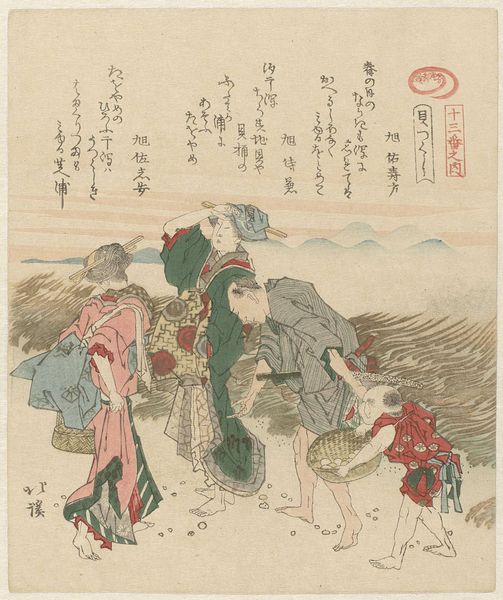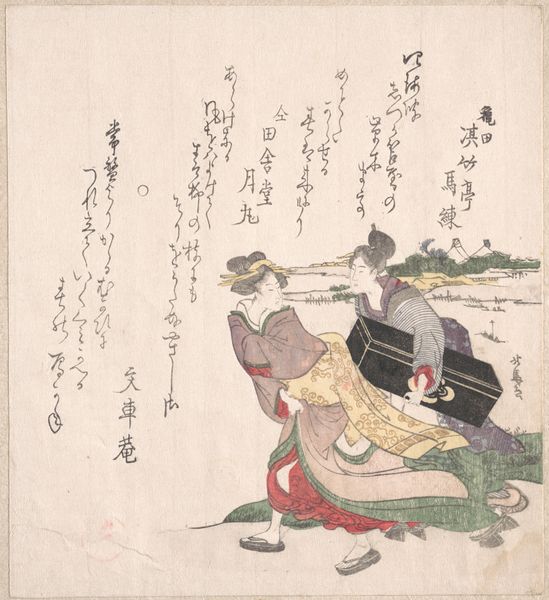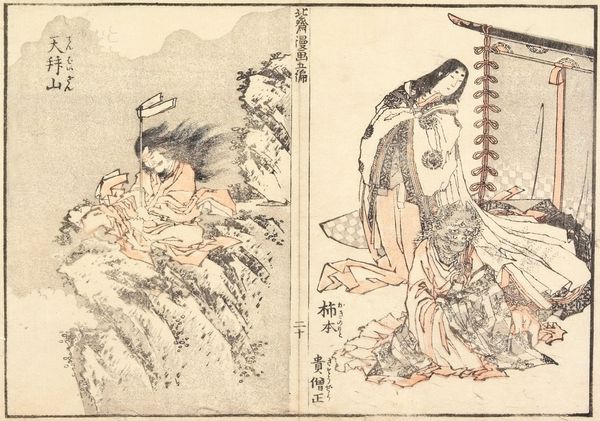
Flower (Hana), from the series "Snow, Moon, and Flowers (Setsugekka)" n.d.
0:00
0:00
print, woodblock-print
# print
#
asian-art
#
ukiyo-e
#
woodblock-print
#
genre-painting
Dimensions: 14.0 × 24.2 cm
Copyright: Public Domain
Curator: Before us we have a work titled "Flower (Hana), from the series "Snow, Moon, and Flowers (Setsugekka)" by Teisai Hokuba. It's a woodblock print, currently residing here at the Art Institute of Chicago. Editor: Hmm, my first impression is…intimate. Like we’re intruding on a private moment. The colours are muted, the lines delicate – it feels very interior. Curator: The composition guides our reading – the women are clustered close to the picture plane, their engagement focused inward. The diagonal of the floorboards, and even the posture of the woman holding the flowering branch, all lead back to this central group. Editor: Right, she's the lynchpin. There’s a sense of performance about her gesture, she's really showing off that sprig of blossoms. You get the feeling these women know each other, there's a sort of practiced performance of intimacy on display here. Curator: Consider, though, the broader series title: "Snow, Moon, and Flowers." Hokuba employs metonymy, these natural elements function almost as characters in their own right. Here, "Flower" is less about botanical accuracy, more an evocation of ephemeral beauty, carefully curated and presented, an essence. Editor: And carefully received, judging by their faces! You know, it almost feels like a little satire? The exaggerated poses, the theatrical display of appreciation... Or perhaps I’m being cynical. Curator: Cynicism perhaps isn't misplaced, though certainly nuanced in this case. Genre paintings like these were commodities, portraying idealized versions of feminine beauty and cultured leisure. They functioned both as art objects, but also social mirrors. The gaze directed at women always complicates, doesn’t it? Editor: Yes. Seeing it now, in this museum, is an interesting displacement. It's still performing for an audience, but the audience is entirely different from what Hokuba imagined. Maybe that inherent performativity is what interests me the most in the end. Curator: I would simply draw attention again to how Hokuba uses the materiality of the woodblock to such delicate ends, in creating layers and tones, we discover something profound about the formal and cultural values in play.
Comments
No comments
Be the first to comment and join the conversation on the ultimate creative platform.
